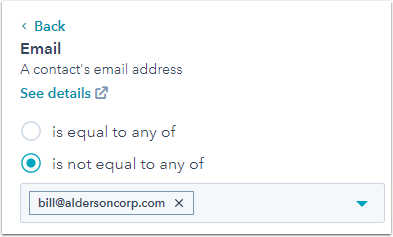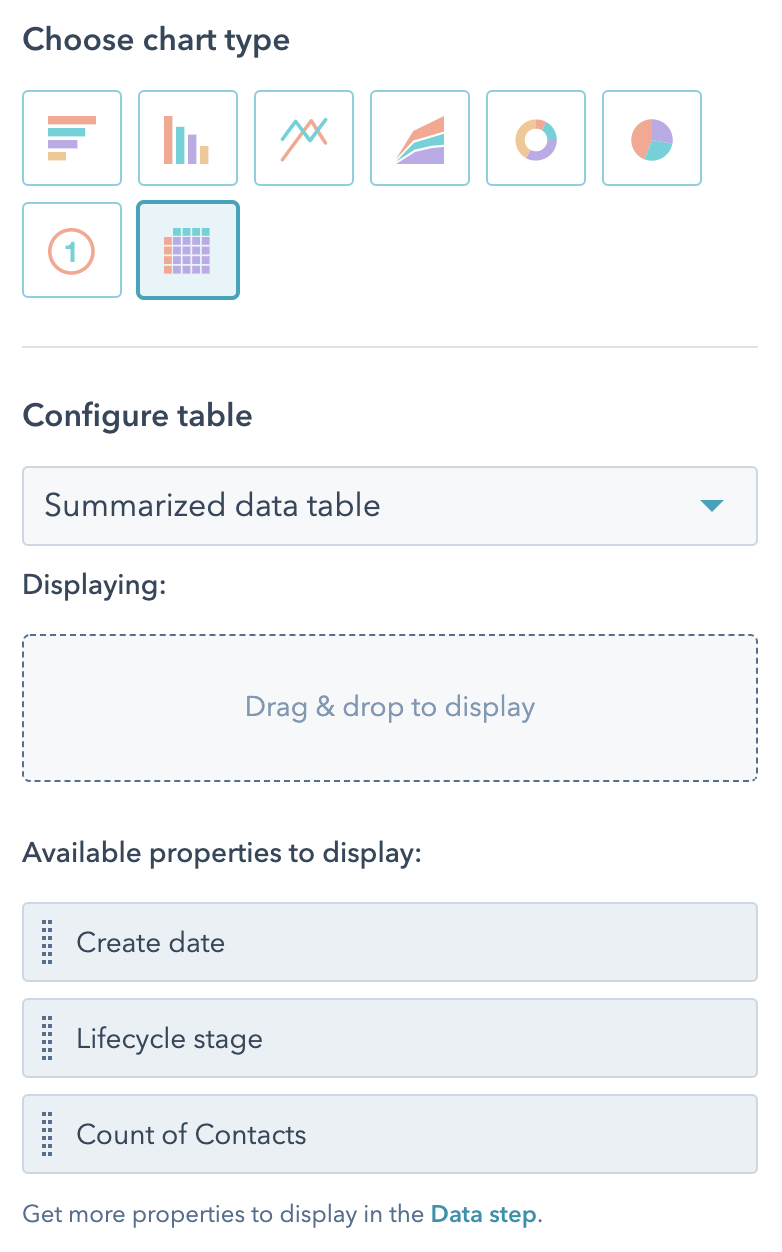As marketers, we are always looking for ways to work faster, better, and more efficiently. When I first joined SmartBug®, I was welcomed by a team that wasn’t just skilled in HubSpot—they were true experts. Their incredible knowledge helped me work better, smarter, and more efficiently on the platform in ways I had never thought possible.
As self-proclaimed experts at HubSpot, to say SmartBugs have mastered the platform would be an understatement. I’ve made it my goal here at SmartBug to harness that power of the collective HubSpot knowledge and provide my clients with the greatest functionality possible in the platform.
I’m excited to share with you today some of my favorite contact data hacks that help you not only work more efficiently, but provide you with a few ways to work smarter. Here are a few common questions (and answers!) that my customers ask regarding their customer relationship management (CRM) platform, and a few contact data hacks in HubSpot to make your life easier.
1. My database is “messy,” and I need to clean it up. What are some good ways to do this?
This is easily the most common question and problem I see clients dealing with in their HubSpot instance. While there is no “right” answer to this question, there are places I recommend starting when it comes to cleaning things up. Here are a few quick wins for your HubSpot database to start with:
Create a hard bounce or unsubscribed list.
If you’re looking for immediate cleanup, your hard bounced or unsubscribed list is the lowest-hanging fruit. In your “Marketing Email” dashboard, navigate to “Email Bounce Tools” and then “Create a list of Hard Bounced Contacts.” If you’re looking to remove contacts in your database that aren’t “worthy” of communication, this is a good place to start.
However, consider those contacts that have simply opted out of communication. It may be helpful to create a separate hard-bounced and unsubscribe list to use for email exclusions (HubSpot will create this for you automatically) while the data on these contacts may still be relevant. If you’re bound by the number of contacts in the HubSpot database, then deleting these contacts might be your best option.
Merge contacts and companies that are duplicates.
Although it’s time-consuming, reviewing data duplication in HubSpot is incredibly necessary. Merging duplicate contacts and companies can help with disjointed customer service, unnecessary storage costs, and lost productivity. The answer is simple: Clean it up. To do so, navigate to your contact and customer portals, visit “Actions,” and navigate to “Manage duplicates.”
Perform a database audit.
While some of these suggestions may take more time than others, performing an audit of your database is definitely worth the investment. When reviewing your database, review HubSpot properties, forms, workflows, and contact records to understand what data you are capturing, and how your data is being stored in the database.
Here are a few key questions to ask your team when reviewing your database:
- How can we condense our forms and form fields to capture only the necessary information required for our sales, marketing, and service teams?
- Once a form is completed, what happens to the data that is captured?
- Based on the information we’ve captured, do we need to create any internal workflows that map fields to identify specific personas or other relevant criteria?
- Are there any duplicate properties we’ve created unnecessarily in the database that can be combined, condensed, or eliminated?
- What data is missing, and what areas of our database need to be updated to properly reflect any necessary changes?
Understand lifecycle stage updates on the company and contact levels.
Probably one of the most misunderstood elements of the HubSpot database is the lifecycle stage sync setting. From the company level, this is an excellent feature for your team. However, from a contact-level perspective, this could be a fundamental flaw for your teammates in understanding how lifecycle stages are represented in the database.
The HubSpot “lifecycle stage sync” setting ensures that when a company’s lifecycle stage is updated on the company record level, all contacts associated with the company are updated. However, if your sales and marketing team members are working specifically with contact records only and either forget or neglect to update company records, this could cause data flaws in your HubSpot database.
This can also be an issue when a company targets multiple divisions at an organization. A company may be a client, but only contacts in a certain division are customers, and the others are not.
| Pro Tip: Sales and marketing alignment is key to success in your HubSpot portal. Ensuring all team members are updating contact and company records properly is essential to a clean database. However, if flaws are identified due to lack of updates in the database, consider setting up a workflow that identifies a contact’s lifecycle stage at a particular company and updates the company record associated to change the lifecycle stage of a company record for consistency.
Note: Setting up a workflow may cause flaws in reporting for a skewed number of contact lifecycle stage changes. |
2. What are best practices with data segmentation in HubSpot?
First and foremost, data segmentation is the biggest contact data hack in HubSpot on my list (pun intended). Data segmentation empowers marketers to market effectively and drive results. A clean database helps us understand the full picture of a contact and helps align sales and marketing teams for the common goal of turning contacts into customers.
Without data segmentation, how can you possibly understand the health of your database? Here are a few key lists I recommend setting up in your HubSpot portal:
- Lifecycle Stages
- Buyer Personas
- Blog Opt-Ins & Opt-Outs
- Job Titles/Roles
- Industries
- Employees and Competitors (because no one wants their competition to be contacted about a demo or to receive info about your tools of the trade)
In addition to the above recommended segmentation, here are a few commonly asked data segmentation questions that are easy to address:
How do I remove an unwanted contact off of a list without deleting the contact?
Depending on the type of list setup (active or static) there are a few easy ways to make this possible. Here are the easiest ways to remove someone from active or statics lists:
- When working with an active list: Navigate to the list criteria in your list. Add criteria on the contact property level to be email “is not equal to any of” or “is equal to any of,” and then insert the contact’s email address that you’d like to exclude/add.
- When working with a static list: If a list is static, you can simply check the box next to the person’s name and click “Remove from list.” On an ongoing or automated basis, you can also do this using the workflows tool by creating a contact-based workflow to add or remove someone from a static list.
How do I bulk update contacts based on data criteria?
Bulk editing contacts, although easy, can be often overlooked as an easy way to update contacts in your database. While having clean data is vital, it’s also essential to ensure property values aren’t missing. If you’re missing known properties such as lifecycle stage, be sure to properly update in your database. I have had clients that failed to update lifecycle stages for contacts and were able to identify customers in a database through other means, such as a custom property.
There are a few ways to update contacts in your database:
- Enroll contacts in a workflow to update based on a particular property.
- Select contacts or companies on a list or in the contact/company view, select “Edit,” and choose the property to change.
- Export contacts in a list, make updates to the list manually in the spreadsheet, and re-upload the list (be sure to include contact ID to avoid duplicate contacts).
3. I have a lot of contacts in my database, and my lifecycle stages aren’t prioritizing my leads well enough. How can I segment my database further?
Utilize the power of HubSpot’s predictive lead scoring (for Enterprise users) or use the custom HubSpot score property to create custom scoring and calculation properties to enable your team members to segment your database beyond lifecycle stage properties.
Using the custom HubSpot score property, allocate a set of positive and negative points based on known criteria of that contact. Sales and marketing teams can use the score to further segment the database, to understand best-fit contacts. This enables the identification of opportunities to focus attention to or divert away from, with further prioritization.
If the HubSpot score is currently being used by your sales teams, consider other ways they can utilize HubSpot custom scoring or calculations. For example, custom scoring could identify existing customer upsells and identify which customers are more likely to purchase an additional product or service. In addition, custom calculation properties can help with creating custom equations based on a set of criteria you outline in the individual property.
4. How can clean data help with reporting? What are unique reports to set up in HubSpot?
Our contact database is at the heart of our data story. Without clean and healthy data, we can’t confidently provide reports to our teams that are accurate and up to date. In addition, a one-time data checkup won’t guarantee long-term success.
Just as you regularly check in with your doctor, be sure that you’re regularly revisiting, auditing, and reviewing your database for health checks. With clean data, HubSpot has endless reporting opportunities to be sure that your teams can easily identify what is working—and have full transparency into what isn’t.
Here are a few unique reports that a clean HubSpot database can leverage:
Create reports from HubSpot unsummarized data tables.
A useful tool, especially for sales teams using HubSpot, unsummarized data tables are a great way to pull in multiple data points and provide comprehensive reports to understand prioritization of leads. Use the HubSpot custom reports feature to create an unsummarized data table. It will be sortable by all of the property fields pulled into it.
Utilize ABM reporting.
For those taking a deep dive into account-based marketing (ABM), HubSpot’s features and tools for ABM require a clean database for optimized success. The first step with ABM is to identify your ideal customer profile (ICP), and without a clean database, this will be next to impossible. After an ICP has been identified, consider segmenting out a list of companies that fit into this criteria and bulk edit, or create workflows to segment companies into targeted accounts on tier 1, 2, or 3.
The ABM features also allow your team to look at specific targeted accounts and segment based on roles such as decision makers, budget holders, blockers, or any additional custom roles your team identifies. Once the database has segmented for ABM tools, check out some of the templated HubSpot ABM reports or the ABM dashboard in HubSpot reporting tools.
The secret to success? Create your own contact data hacks in HubSpot.
One of the biggest lessons I’ve learned from working here at SmartBug is that no HubSpot portal is the same, and customer portals are not a “one size fits all” approach. Our customers are unique and each have a set of different use cases, needs, and requirements for leveraging the platform.
Some of our best hacks have come out of needing to find workarounds or different approaches to “normal” for our clients. So I challenge you to do the same: Create your own contact data hacks, and leverage the power of your portal to find ways to work smarter.
If you’re looking for the latest and greatest from the HubSpot platform, check out our SmartTake webinar series, where SmartBug professionals highlight their favorite latest hacks!

